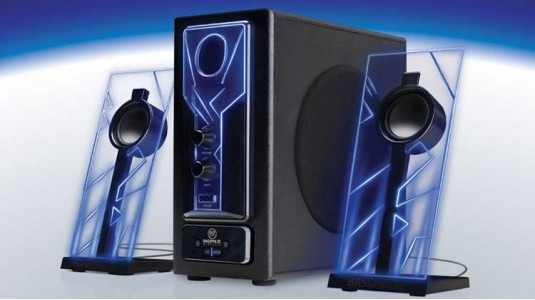As your one-stop-shop for everything electronics, we at Accessory Power field many questions about our take on the state of the Consumer Electronics Industry as well as our thoughts on what the next best technology will be. As time has passed, we’ve received countless requests for and questions about Wi-Fi Speakers. Wi-Fi speakers are a relatively new technology but look to have a bright future in the wireless speaker category. Let’s take a closer look at Wi-Fi speakers and how they stack up against that Bluetooth Speaker you use at home.
Wi-Fi Speaker Technology - What is it? Like your laptop at home, Wi-Fi Speakers work with your existing home network and a wireless router to play audio in one room or throughout the whole house. These speakers allow for a higher resolution audio transmission than do current Bluetooth Speakers. Wi-Fi speakers achieve this by using a lossless codec, which in layman’s terms means there is absolutely no loss of audio fidelity as the data signal travels across your Wi-Fi network. This technology offers a stronger signal with a more immediate range.
How does it stack up to Bluetooth Speakers? Well, Wi-Fi has a greater range than Bluetooth, sometimes measuring up to 120 feet indoors! Just a bit farther than the 33 feet you get with most Bluetooth Speakers. Wi-Fi Speaker technology will oftentimes cover your entire house and eliminates the “line of sight” Bluetooth Speakers need to connect. Wi-Fi Speakers also offer two different modes: Solo and Multi Mode. Solo Mode allows each device to play a song separately while multi-mode allows all the devices in the same group to play the same song at the same time.
Sounds like Wi-Fi Speakers are a slam dunk over Bluetooth Speakers. Not so fast. Bluetooth Speakers offer lower power consumption and are much, much easier to set up than Wi-Fi Speakers. Rather than the simple search and connect we are all used to with Bluetooth, Wi-Fi connections are much more complex and require the configuration of hardware, software or even use of an APP.
Well Wi-Fi or Bluetooth Speakers? We’ve laid it all out on the line and the choice is yours! If you think Bluetooth is still the best speaker for you, check out our lineup at Accessory Power. We’ve got tons to choose from! If you chose Wi-Fi Speakers, let’s just say keep your eyes and ears glued to the Accessory Power page as we’ll have a little something for you in the very near future.
Still can’t decide? Checkout the Technical Specifications Comparison Chart we’ve put together for you below. For more information on Accessory Power visit our ‘About Us’ page at http://www.accessorypower.com/about. Don’t forget to LIKE us on Facebook, follow us on Twitter and subscribe to our YouTube Page for company information, product releases and videos and more!
| COMPARISON | BLUETOOTH | WIFI |
| Frequency | 2.4 GHz | 2.4, 3.6, 5 GHz |
| Cost | Low | High |
| Bandwidth | Low (800 Kbps) | High (11 Mbps) |
| Specification Authority | Bluetooth SIG | IEEE, WECA |
| Security | It is less secure | Security issues are being debated. |
| Year of Development | 1994 | 1991 |
| Primary Devices | Mobile phones, mouse, keyboards, office and industrial automation devices. Activity trackers, such as Fitbit and Jawbone. | Notebook computers, desktop computers, servers, TV, Latest mobiles. |
| Hardware Requirement | Bluetooth adaptor on all the devices connecting with each other. | Wireless adaptors on all the devices of the network, a wireless router and/or wireless access points. |
| Range | 5-30 meters | With 802.11b/g the typical range is 32 meters indoors and 95 meters (300 ft) outdoors. 802.11n has greater range. 2.5GHz Wi-Fi communication has greater range than 5GHz. Antennas can also increase range. |
| Power Consumption | Low | High |
| Ease of Use | Fairly simple to use. Can be used to connect up to seven devices at a time. It is easy to switch between devices or find and connect to any device. | It is more complex and requires configuration of hardware and software. |
| Latency | 200ms | 150ms |
| Bit-Rate | 2.1 Mbps | 600 Mbps |
